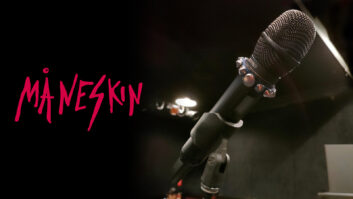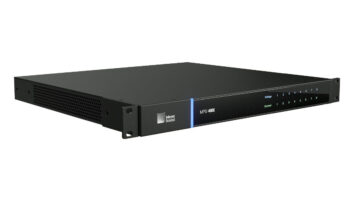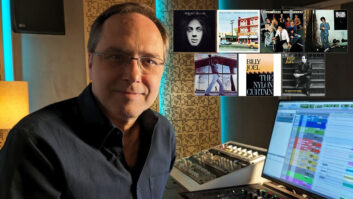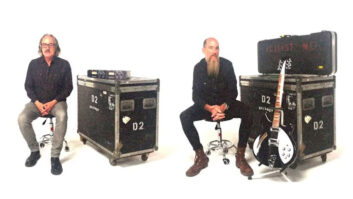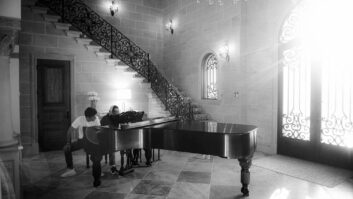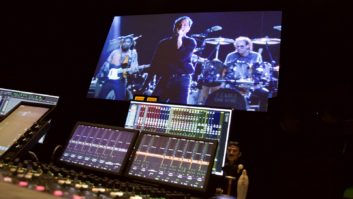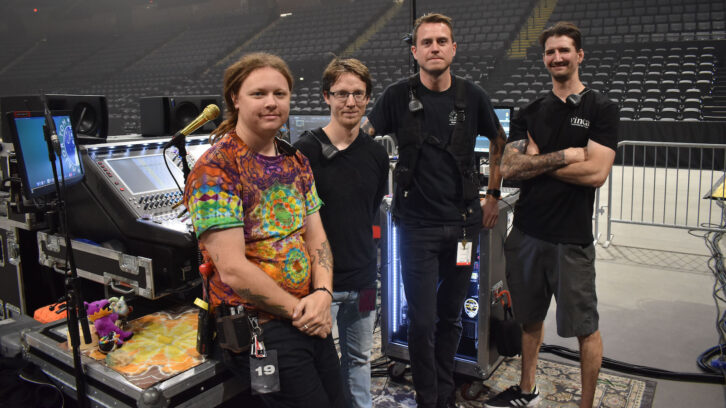
There aren’t many bluegrass artists headlining arenas these days, but Billy Strings isn’t just any bluegrass artist. With a style influenced as much by Black Sabbath and Led Zeppelin as Doc Watson and Del McCoury, Strings’ career has skyrocketed over the last five years—he’s jumped onstage with every major jam band you can think of, played socially distanced drive-in shows during the height of the pandemic, and released four albums, including 2019’s Home, which took home a Grammy for Best Bluegrass Album.
Veteran FOH engineer Andy Lytle has witnessed much of that journey, having joined the artist’s concert sound team in 2018. “When I started, we were in a sprinter van and a 12-foot trailer—a very small production with minimal audio equipment,” he recalled with a chuckle. “We were in 300-person venues and now are selling out 10,000 people.”
As the audiences have grown, so have the live sound requirements. Today, the act’s sound is provided by Major Tom US (Clarksville, Tenn.), ensuring consistent audio night after night.
Lytle oversees a DiGiCo SD12 desk to mix the five-piece band (guitar, fiddle, banjo, mandolin and bass), taking roughly 30 inputs off the stage for the house mix, while additional audience mics at front-of-house get blended into livesteam mixes that go out to Nugs.com.
Most of the house mix processing is handled with plug-ins, with Lytle opting for a Waves SD7 Bundle, using roughly 20 plugs, such as C4 and C6 multiband compressors and the F6 dynamic EQ.
Billy Strings’ Drive-In Tour Rolls On
However, when Strings and his band get creative onstage, Lytle, too, explores what he can bring to the tour sound: “Billy gives me full creative control to get weird while they’re getting weird. It’s a big bluegrass jam band, so he has a lot of trippy pedals and I add to that element. I’ve been using Brauer Motion a lot—it’s like a stereo panner, but it gives the effect of panning around your head instead of, say, left to right. It’s really interesting, because you can change the circle patterns to ovals and do some really weird, wild stuff.”
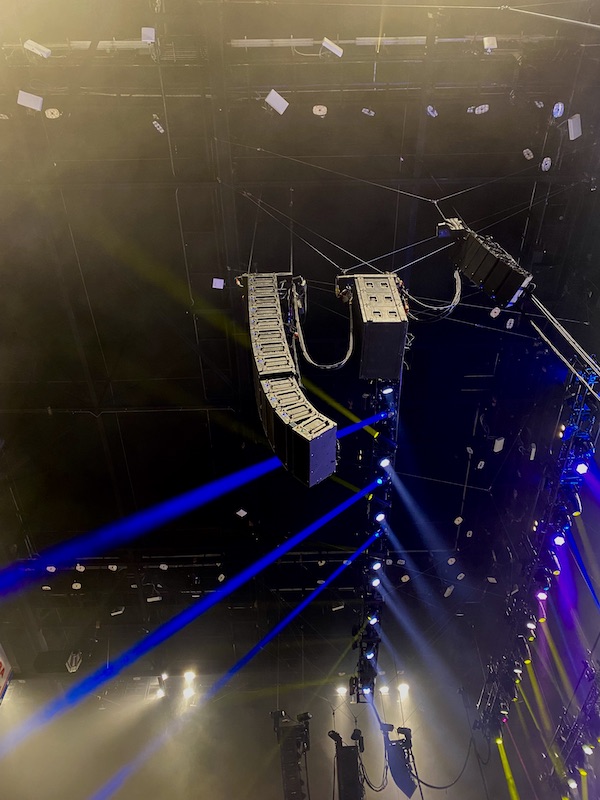
It’s a big leap from how Bluegrass has traditionally been mixed, of course, as Lytle pointed out: “The old-timer bluegrass guys, they would all step up to the one mic onstage and do their solo, and then they’d step away and you could barely hear their instrument. So when I began mixing Billy, I had to change my thought process and not have the instruments up at all times; I had to start bringing them back down to have the vocals on top.” The musicians’ instrument miking is all wireless and handled with an Audio-Technica mic on the mandolin and various Shure clip-on mics elsewhere, going into Grace DI boxes. Meanwhile, Strings’ voice is captured with a DPA d:facto 4018 vocal mic, while backing vocals are heard via sE Electronic V7s.
“It’s a little bit of a different approach [to use individual miking], but having that blend and mixture is really key to the Bluegrass world, sticking with those roots of it,” said Lytle. “You’re building every instrument from the ground up out of the PA, and you’re able to fine-tune each individual instrument.”
That PA is a sizable Meyer Sound system, chosen in part for its ability to provide consistency from venue to venue. “I’ve mixed them on pretty much every standard PA you can mix on these days, and the Meyer system is so instrument-friendly for true bluegrass. You turn it up and the mandolin sounds like a mandolin is supposed to! With a lot of different PAs, they make the instruments sound too DI-ish; they don’t have the tonality of a musical box. With Meyer, to me, you get the clarity and the musicality that makes the instruments sound more natural. We have a mixture of Lyon and Leo speakers right now, and then we’ve got the 1100-LFC subs which are just amazing with the bass. You can get that low-end punch and feel without it feeding back all over the place.”
The group’s fall tour wrapped up with a brief UK run in December and a pair of New Year’s shows in New Orleans, but a busy Spring is already lined up for Strings and company. After taking January off, they’ll head out for a lengthy 44-show jaunt starting in February, complete with a two-night stand headlining Red Rocks Amphitheatre in Colorado, all of which will bring more of Strings’ modern bluegrass to the masses.
